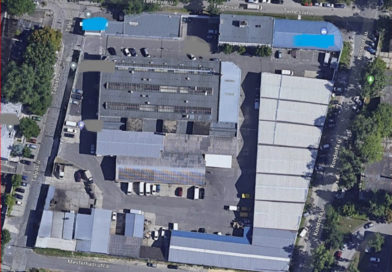Demand for office space to shrink 20% by 2050
Latest research from Colliers International has found that due to a declining workforce population, Europe is set to see a drop in demand for office space over the next few decades. The findings of the report reveal Europe is witnessing a shrinking working population, creating a base case scenario of a 10% reduction in demand for commercial (office and industrial) space across Europe over the next 20 years. This will be followed by a further 10% diminution over the subsequent 20 years to 2050.
“In Hungary typically the majority of employees of the international companies and shared service centers consists of Generation Y. The fit out of the office premises needs to be adjusted to the Generation Y’s work culture. Developers are advised to take this generation’s needs in consideration during the planning phase. While renovating existing premises for tenants these needs should be taken in account as well.” – said Kata Mazsaroff, Head of Tenant Representation at Colliers International Hungary.
Today, the Baby Boomers dominate the workforce (at almost 45% of the working population) and their demands have been most adhered to when planning office environments to date, resulting in a high proportion of cellular office use as opposed to full open plan. By 2020 the influence of the Baby Boomers will have waned as it is effectively halved and by 2030 Baby Boomers will be virtually non-existent within the workforce. This will leave Generation Y and Z to dominate the workforce with greater involvement in decisions regarding the format and design of the workplace. “We can expect a major change in the dominant style, motivations and methods of working and commuting within our modern workforce over the next 20 years,” says Guy Douetil, Managing Director, Corporate Solutions, EMEA, “Owning and creating the right type of space flexible enough to suit these changing styles and demand will become more critical for developers and owners to take into account.”
Office buildings typically have a 20 year life-cycle and long-term investments are funded over a 20 year term. For banks and investors, it will be vital to ensure that their office buildings are future–proofed as much as possible to meet these changing demand patterns. Failure to do so could mean higher vacancy, increased obsolescence (resulting in a requirement for higher levels of capital expenditure to upgrade stock) and lower rents, resulting in a weaker exit yield and reduced returns. While these European-wide trends affect everyone, the national and local impact on employment and real estate markets can and will differ strikingly. On the face of it, eastern, southern and western European office markets will feel the brunt of a reduction in the workforce, and thus the demand for office space, while northern Europe will maintain marginal growth. However, when migration forecasts are taken into consideration based on economic opportunity, eastern European countries are experiencing the positive impact of outsourcing on jobs growth. “We project that the outsourcing workforce in Eastern Europe could grow to over half a million by 2020,” comments Damian Harrington, Regional Director, Research and Forecasting. “This equates to 5.5 to six million square metres of office space, enough to fill the combined modern office stock of Warsaw and Prague.”































